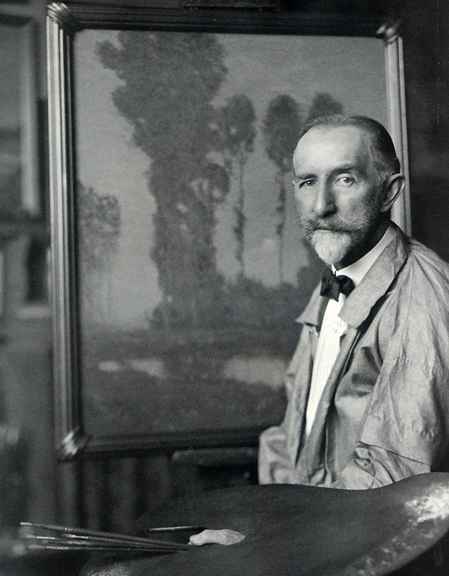Charles Warren Eaton (1857 - 1937) Works

Charles Warren Eaton (1857 – 1937)
A longtime resident of Bloomfield, New Jersey, Charles Warren Eaton was widely known in the late nineteenth and early twentieth century for his tonalist landscapes of New Jersey. Born in Albany, New York, he moved to New York City around 1879 to pursue his goal of becoming an artist. He enrolled in classes at the National Academy of Design and the Art Students League where he studied under J. Carroll Beckwith. By the time he was twenty-five, his paintings were accepted for exhibition at the National Academy where renowned English writer, Oscar Wilde, purchased one. Eaton achieved critical success by 1910. He moved to Bloomfield in 1888 and lived there until this death.
In 1889, renowned artist, George Inness, from nearby Montclair, New Jersey visited the New York studio of Eaton. He was taken with Eaton’s talent and a close mentoring relationship began, which lasted until Inness’s death in 1894.
Early in his career, Eaton became known for his scenes of the setting late afternoon sun and moonlit nocturnes over foreboding landscapes.
Frequent trips to Europe resulted in many views painted of Bruges in Belgium, Lake Como, Italy, Holland, and France. He also began to concentrate on the white pine forests of central New England which became the subject matter for some of his most famous paintings.
Some of the many institutions and salons where his paintings were exhibited include the National Academy of Design, the Boston Art Club, the Pennsylvania Academy of the Fine Arts, the Royal Academy in London, the St. Louis Exposition, the Buenos Aires Exposition, the Paris Gallery of Art, the Art Institute of Chicago, and the Carnegie Institute. He garnered many medals and awards internationally throughout his long career.
Sources:
- New Hope for American Art by James Alterman
- Charles Warren Eaton, Montclair Art Museum, 1981

